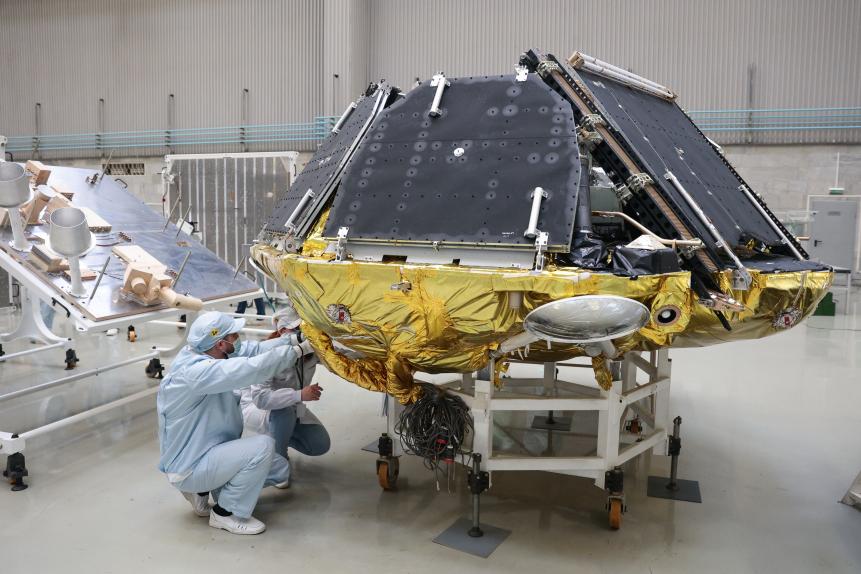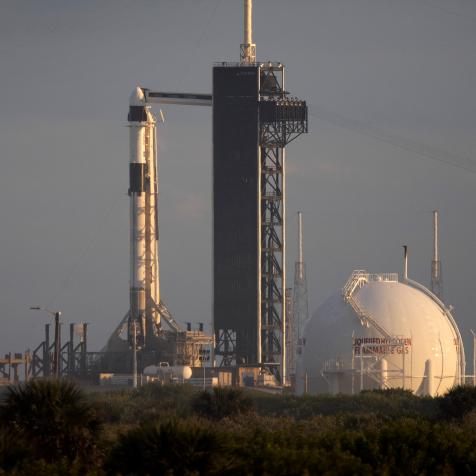
Anadolu Agency
3 Awesome Launches to Look Forward to This Year

2021 was a pretty exciting year for spaceflight. We had a bunch of private rocket launches and the initiation of a new era in space tourism. We had the launch of DART, a mission where NASA will use a spacecraft to punch an asteroid in the face. And at the last moment, we had liftoff for the much-delayed and long-awaited James Webb Space Telescope.
Here are three launches to watch out for this year:
1) ExoMars 2022
Feel like we’re not exploring Mars enough? Well, then you’re in luck. Back in 2016 the European Space Agency, in collaboration with the Russian agency Roscosmos, launched ExoMars, a duo of orbiter and lander aimed at the red planet. Unfortunately, the lander really leaned into the landing bit and ended up crashing, but the orbiter is still there today.

Sergei Bobylev
An employee of a Russian aerospace company is pictured at an ExoMars mockup.
The second half of the mission was supposed to launch in 2020, but problems with the parachutes led to minor delays. But because orbits are orbits and our planets only line up every two years, mission planners had to cool their heels until 2022.
ExoMars 2022 should launch in September 2022, and arrive at Mars in June of the following year. The Russian-designed lander, named Kazachock, will deliver the Rosalind Franklin rover to the surface. There, the rover will hunt for signs of life (mostly past life, but you never know) on the formerly wet and wonderful world of Mars.
2) Artemis 1
It’s been a long time since NASA fielded its own launch system. When the Space Shuttle retired in 2011, the agency has had to rely on Russian launchers and private spacecraft companies. But all that will (hopefully) change this March when NASA plans to launch an uncrewed test flight of the Space Launch System.

Bill Ingalls/NASA
Administrator Bill Nelson talks to the agency's workforce during his first state of NASA event. He discussed the agency's plans for future Earth-focused missions to address climate change; a robotic and human return to the Moon through the Artemis program; and two new planetary science missions to Venus for the late 2020s called VERITAS and DAVINCI+.
What is the Space Launch System? Well, imagine those old-school Saturn V rockets used for the Apollo missions. Now make them bigger. That’s basically it. The system has been much criticized since it doesn’t incorporate any of the advances in reusable rocketry developed over the past decade.
The rocket was supposed to launch last November, but problems with the Orion capsule on top of it caused delays. If successful, NASA will next move ahead to crewed tests, which would be nice.
3) Starship
It’s a reusable rocket being developed by the private company SpaceX. It’s an impressive bit of engineering – the largest reusable vehicle ever deployed. It will deliver heaps of cargo into orbit, to the Moon, and possibly even Mars.

NurPhoto
The SpaceX Launch and Landing Control center in Cape Canaveral, Florida.
But not the stars. Starship isn’t much of a…starship.
Anyway, SpaceX has successfully made suborbital launches of the vehicle and hopes to send it into orbit in 2022.
After that, the sky’s the limit (but the stars definitely are).
Dive Deeper into the Universe
Journey Through the Cosmos in an All-New Season of How the Universe Works
The new season premieres on Science Channel and streams on discovery+.




















